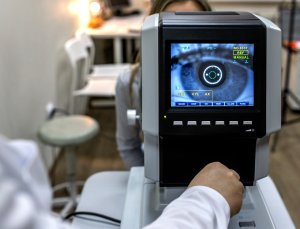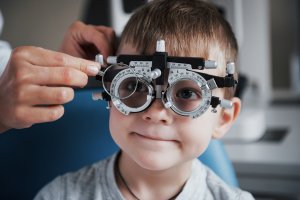What is an Eyeteaming Problem?

Voted Best of Berks—
eight years in a row!

It is not enough to have 20/20 vision and be able to clearly see a book or the board in a classroom. In order to see properly, we have to use our two eyes together in a very precise and coordinated fashion.
Every time we look at something, we must accurately aim our two eyes directly at the object of concern. Each eye sends an image to the part of the brain that is involved in the process of seeing. This part of the brain, called the visual cortex, then tries to combine these two images to make one fused image. If these images are identical, the result is normal, clear, single vision and a perception of depth. If, however, the two eyes are not performing in a coordinated manger, the visual cortex will receive two different images and will experience double vision.
Approximately 5 to 10% of children and young adults have eyeteaming problems that are significant enough to cause patient complaints.
As you can imagine, double vision is not something that a child or an adult can tolerate. It becomes very difficult to function—either at school, at play or at work—if double vision occurs.
Find a Doctor
Physician information including education, training, practice location and more.
Schedule an Appointment
Call 800-762-7132 or make an appointment online.





